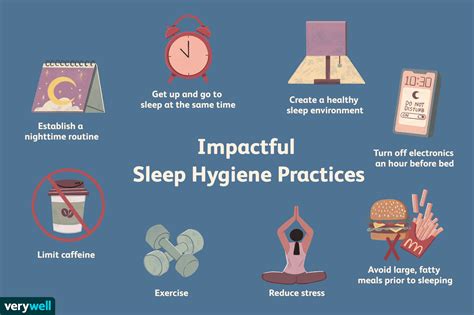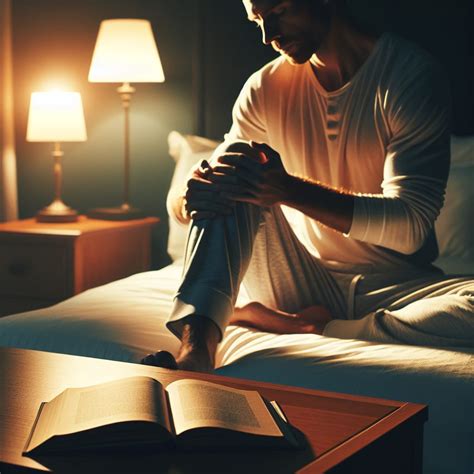Imagine yourself nestled comfortably in the friendly embrace of a cozy seat, high above the vast expanse of land and sea. As you embark on a journey through the skies, your mind drifts towards one serene thought – a deep, uninterrupted sleep. In the realm of air travel, where cramped spaces and noisy surroundings can make shut-eye seem like a distant dream, finding the secret to achieving a restful nap becomes a quest worth pursuing.
Unlocking the code to a peaceful slumber in mid-air involves more than just luck or chance. It requires a careful strategy, backed by years of travel experiences and a treasure trove of valuable insights from seasoned globetrotters. By following a few simple yet effective techniques, you can transform your time spent aboard aircraft into an oasis of calmness and rejuvenation.
Embrace the power of preparation – a key principle that lays the foundation for a successful in-flight snooze. From selecting the ideal seat to packing your personal sleep kit, the secret lies in meticulous planning. Equip yourself with handy tools and accessories that create a soothing environment, calming both body and mind. Through the clever use of supportive pillows, soft eye masks, and noise-canceling headphones, you can effortlessly transition from the commotion of the cabin to a tranquil haven of restful dreams.
The Importance of Pre-Flight Preparation for Quality Sleep

Getting a good night's sleep is essential for maintaining optimal health and well-being. When it comes to air travel, ensuring quality sleep can be even more challenging due to the unfamiliar environment and potential disruptions. In order to maximize the chances of having a restful sleep during a flight, adequate pre-flight preparation is crucial.
1. Mental Preparation: Prior to the flight, it is important to mentally prepare oneself for the upcoming journey. This can be done by practicing relaxation techniques, such as deep breathing exercises or meditation, to help calm the mind and reduce anxiety or stress that may interfere with sleep. Additionally, creating a positive mindset and visualizing a peaceful and comfortable sleep experience can contribute to a more restful flight.
2. Physical Preparation: Taking care of one's physical well-being before a flight is also vital for quality sleep. Engaging in regular exercise leading up to the trip can help improve sleep quality by reducing restlessness and promoting relaxation. It is also important to maintain a balanced diet and avoid consuming large meals, caffeine, or alcohol close to the departure time, as these can disrupt sleep patterns and lead to discomfort during the flight.
- Ensuring Comfort: Investing in comfortable travel essentials such as a neck pillow, an eye mask, and noise-canceling headphones can greatly enhance the quality of sleep while on board. Wearing loose and breathable clothing, as well as packing an extra layer for warmth, can also contribute to a more peaceful sleep experience.
- Establishing a Sleep Routine: Establishing a sleep routine before the flight can help signal the body that it is time to rest. This can involve engaging in relaxing activities such as reading a book, listening to calming music, or taking a warm bath. By following a consistent pre-flight sleep routine, the body can adjust more easily to the unfamiliar sleep environment on the plane.
- Creating a Sleep-Friendly Environment: Minimizing distractions and creating a sleep-friendly environment can greatly improve the chances of quality sleep while flying. This can be achieved by using a sleep mask to block out light, using earplugs or white noise machines to drown out any disruptive sounds, and choosing a seat away from high-traffic areas.
- Utilizing Technology: Taking advantage of technology can also play a role in optimizing sleep on a flight. Using smartphone apps or wearable devices that offer guided meditation or soothing sounds can help induce relaxation and promote better sleep. Additionally, downloading offline entertainment options such as audiobooks or calming music can help occupy the mind and facilitate sleep.
By taking the time to adequately prepare for a flight and implement these pre-flight strategies, individuals can greatly enhance their chances of achieving a quality sleep experience on board. Quality sleep during a flight can contribute to a more enjoyable and rejuvenating travel experience, allowing individuals to arrive at their destination feeling refreshed and ready to start their journey.
Choosing the Right Seat for Optimal Rest and Comfort
When it comes to having a peaceful and comfortable sleep during a flight, selecting the perfect seat is of utmost importance. Each seat on a plane offers a unique experience and level of comfort, and finding the right one can greatly enhance your in-flight rest. In this section, we will explore the factors to consider while choosing a seat that ensures optimal rest and comfort. So, let's dive right in!
1. Seat Location
- Front Row Seats: These seats are perfect for those seeking extra legroom and quick access to the exit. You can stretch out comfortably and enjoy a peaceful sleep without worrying about disturbing others.
- Window Seats: If you enjoy gazing at the sky or landscape during the flight, then a window seat offers the perfect view. It also provides a more private and secluded environment for restful sleep.
- Aisle Seats: For those who frequently need to move around or prefer easy access to the restroom, an aisle seat is the ideal choice. It allows you to stretch your legs, maintain mobility, and promptly attend to any requirements.
2. Seat Type
- Reclining Seats: Opting for a seat that reclines will allow you to adjust the angle and find a comfortable position for a sound sleep.
- Exit Row Seats: These seats generally offer extra legroom, making them ideal for stretching out and finding a cozy position during your flight.
- Bulkhead Seats: Located near the dividing walls, these seats offer additional leg space. However, keep in mind that the armrests might be immovable, restricting your sleeping posture.
3. Noise and Disturbance
- For a quieter experience, consider selecting a seat away from high-traffic areas, such as the galley or restrooms.
- If you are sensitive to noise, it's advisable to carry noise-canceling headphones or earplugs to block out any disturbing sounds.
4. Seat Preferences
- If you prefer traveling without any obstruction, opt for a seat in front of the bulkhead. This ensures that there are no seats in front of you, providing more legroom and making it easier to find a comfortable sleeping position.
- Some seats may have limited or no recline, so if you prioritize the ability to recline, double-check the seat specifications before making your choice.
Remember, a well-chosen seat can make a world of difference when it comes to achieving optimal rest and comfort during your flight. So, take some time to consider these factors and select the seat that aligns with your preferences and requirements. Happy travels and peaceful slumbers!
Strategies for Combating Noise and Disturbances During Your Flight

When it comes to getting a peaceful sleep during a flight, the incessant noise and disturbances can often be a major obstacle. However, with a few effective strategies in place, you can combat these distractions and ensure a more comfortable journey.
- 1. Noise-cancelling Headphones: Investing in a good pair of noise-cancelling headphones can make a significant difference in blocking out the ambient noises of the aircraft. These headphones use advanced technology to eliminate external sounds, allowing you to relax and drift off to sleep.
- 2. Earplugs: If noise-cancelling headphones are not an option, earplugs can be an inexpensive alternative. These small devices are designed to block out unwanted noises and create a more serene environment for sleep.
- 3. Selecting a Quiet Seat: Choosing the right seat can have a huge impact on your ability to sleep undisturbed. Opt for seats away from galley areas, restrooms, and engines, as these are typically the noisiest sections of the aircraft.
- 4. Eye Mask: Blocking out visual distractions is just as important as minimizing noise. Wearing an eye mask can help create a dark and calming environment, allowing you to relax and fall asleep more easily.
- 5. Time Your Sleep: Consider adjusting your sleep schedule to align with your flight's departure and arrival times. This can help you sync your body's internal clock and make it easier to fall asleep and wake up at the right times, minimizing disruptions to your sleep.
- 6. Distract Yourself: Engaging in activities that divert your attention from the noise can be useful in promoting sleep. Listening to relaxing music, reading a book, or watching a soothing movie can help distract your mind and lull you into slumber.
- 7. Relaxation Techniques: Practicing relaxation techniques, such as deep breathing exercises or meditation, can help calm your mind and body. These techniques can be especially beneficial in reducing stress and anxiety that may interfere with your ability to sleep.
- 8. Inform the Cabin Crew: If you anticipate any specific disturbances that might affect your sleep, it can be helpful to inform the cabin crew in advance. They may be able to provide assistance or suggest alternative seating arrangements to ensure a more restful journey.
- 9. Pack Travel Essentials: Don't forget to pack travel essentials that contribute to a comfortable sleep. Neck pillows, blankets, and comfortable clothing can all enhance your in-flight sleeping experience.
- 10. Stay Hydrated: Dehydration can disrupt your sleep, so make sure to drink plenty of water during the flight. Staying hydrated can help prevent discomfort and promote a more peaceful rest.
By employing these strategies, you can effectively combat noise and disturbances during your flight, allowing for a more rejuvenating and restful sleep experience.
Creating a Serene Environment for Restful Sleep with Travel Essentials
Discover the key to attaining a peaceful and rejuvenating sleep experience during your travels with the help of essential travel accessories. These carefully selected items can transform your journey into a tranquil haven, allowing you to unwind and recharge amidst the hustle and bustle of travel.
1. Noise-Canceling Headphones: Block out the bustling sounds of the cabin and create a serene ambiance with a pair of high-quality noise-canceling headphones. Immerse yourself in soothing music, calming podcasts, or even gentle white noise to drown out disruptive background noises and promote deep relaxation.
2. Cozy Travel Pillow: Rest your head and neck comfortably with a plush and ergonomic travel pillow. Choose a pillow that offers proper neck support to alleviate tension and prevent discomfort. Its compact size and portability make it a must-have accessory for those seeking a blissful sleep experience on a plane.
3. Eye Mask: Block out intrusive light and create an atmosphere of serenity using a soft and luxurious eye mask. Crafted with gentle materials, these masks provide complete darkness, helping you achieve a sense of calmness and ease, allowing your eyes and mind to rest effortlessly.
4. Aromatherapy Diffuser: Harness the power of soothing scents to create a tranquil environment with a portable aromatherapy diffuser. Select calming essential oils, such as lavender or chamomile, to promote relaxation and facilitate deep sleep. Breathe in the rejuvenating fragrances and let the stresses of travel melt away.
5. Comfortable Travel Blanket: Wrap yourself in plush comfort with a soft and cozy travel blanket. Opt for a lightweight and easily foldable blanket, ensuring warmth and coziness throughout your journey. As you indulge in the gentle embrace of a comfortable blanket, let tranquility wash over you, inviting a restful sleep.
By curating a serene sleep environment using these travel essentials, you can create an oasis of calmness and embark on a journey towards a well-rested and revitalized self. Immerse yourself in the peaceful haven you deserve and drift into a deep slumber, ready to wake up refreshed and energized upon your arrival.
Adjusting Your Sleep Schedule and Overcoming Jet Lag

Ensuring a smooth transition to a new time zone and overcoming jet lag can greatly enhance your travel experience. In this section, we will explore some effective strategies that can help you adjust your sleep schedule and minimize the effects of jet lag.
| 1. Sync your internal clock with your destination | Aligning your sleep and wake times with the local time at your destination can help regulate your circadian rhythm and ease the transition. Gradually adjust your bedtime and wake-up time a few days before your trip to match the time zone of your destination. |
| 2. Get plenty of natural light exposure | Sunlight is a powerful signal for regulating your internal clock. Spend time outdoors or near a window during daylight hours at your destination. This exposure to natural light will help train your body to adjust to the new time zone more easily. |
| 3. Avoid caffeine and alcohol | Both caffeine and alcohol can disrupt your sleep patterns and exacerbate the symptoms of jet lag. Limit your consumption of these substances, especially in the hours leading up to your scheduled bedtime. |
| 4. Stay hydrated | Proper hydration is vital for avoiding the symptoms of jet lag. Drink plenty of water before, during, and after your flight to help combat the dehydrating effects of air travel. |
| 5. Take short naps strategically | If you feel tired during the day, taking short power naps can help boost your alertness and productivity. However, be cautious about napping for too long or too close to your scheduled bedtime as it may interfere with your ability to fall asleep at night. |
| 6. Optimize your sleep environment | Create a conducive sleep environment by blocking out excessive light and noise. Consider using earplugs, an eye mask, or a travel pillow to enhance your comfort and promote better sleep during your journey. |
By following these tips, you can effectively adjust your sleep schedule, minimize the effects of jet lag, and ensure a more enjoyable and restful travel experience.
FAQ
What are some tips for getting a good sleep on a plane?
There are several tips you can follow to help you get better sleep on a plane. First, try to choose a window seat so that you have a wall to lean against. Additionally, bring a travel pillow and a blanket to make yourself more comfortable. It's also helpful to wear earplugs or noise-canceling headphones to block out any noises. Lastly, consider using a sleep mask to create a darker environment.
Is it advisable to take sleeping pills for sleeping on a plane?
Taking sleeping pills for sleeping on a plane is a personal choice and should be done with caution. It's always best to consult with a doctor before taking any medication, as they can provide guidance based on your specific health condition and needs. It's important to remember the potential side effects and to use them only under proper medical supervision.
How can I avoid jet lag and have a restful sleep during a long-haul flight?
To avoid jet lag and have a restful sleep during a long-haul flight, it's important to prepare beforehand. Adjust your sleep schedule a few days before the flight to align with the time zone of your destination. During the flight, stay hydrated by drinking plenty of water, avoid excessive caffeine or alcohol consumption, and try to get some light exercise or stretch during the flight. Additionally, consider taking short naps instead of sleeping for extended periods to help your body adjust to the new time zone.
Are there any specific foods or beverages that can promote better sleep on a plane?
Certain foods and beverages can promote better sleep on a plane. It's advisable to avoid heavy and greasy meals, as they can make you feel uncomfortable and disrupt your sleep. Instead, opt for light and easily digestible snacks like fruits, vegetables, or protein bars. Warm herbal teas like chamomile or lavender can also help you relax and fall asleep more easily.
What can I do if I have anxiety about sleeping on a plane?
If you have anxiety about sleeping on a plane, there are a few strategies you can try. Practice deep breathing exercises or meditation techniques to help calm your mind. Consider listening to soothing music or using relaxation apps specifically designed for anxiety relief. You may also find it helpful to distract yourself by watching a movie or reading a book during the flight. If your anxiety persists, speaking with a mental health professional beforehand can provide you with additional coping strategies and support.



